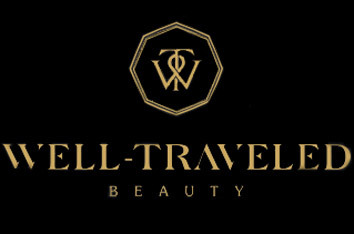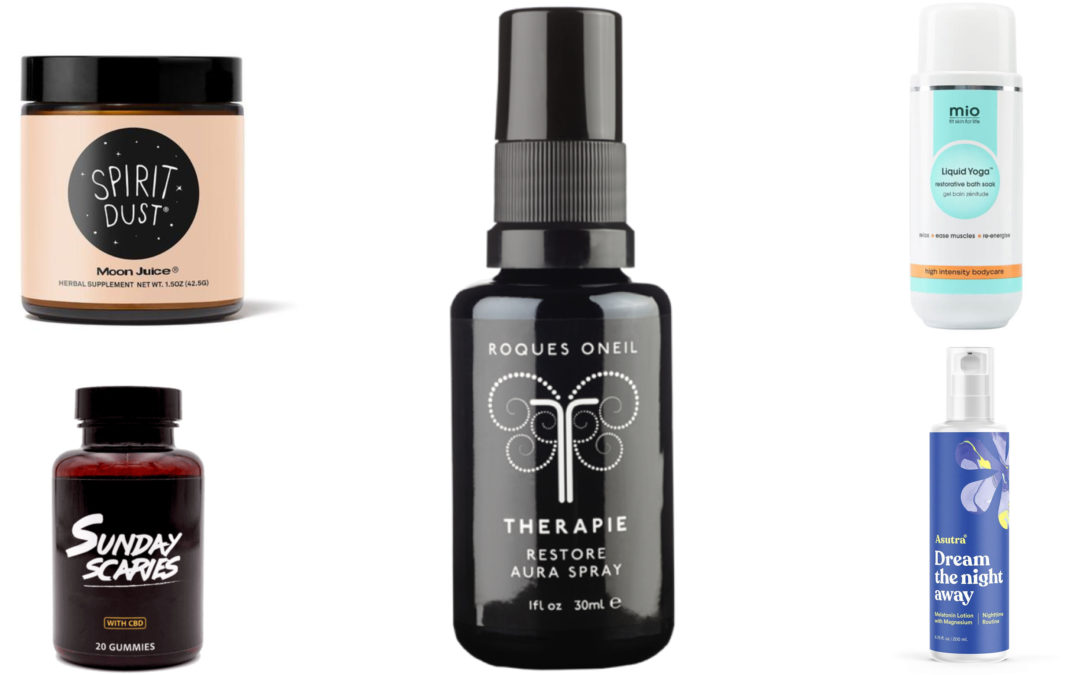
by Rebecca Taras | May 29, 2019 | Beauty, Beauty Products, Beauty Tips, Cosmetics, Health and Wellness, Rebecca's stories, Skin Care, Skincare, Travel
Traveling can be described as either life-changing or as a complete nightmare. No matter how much effort you put into planning the perfect vacation, you can’t account for flight delays (or cancelations), lost baggage, turbulence, theft, or any other hellish circumstance that makes you want to head back home so you can crawl into bed and pull the covers over your face. While many travel-related hiccups are beyond your control, you can try to get a hold of your stress and anxiety levels. With that in mind, here are five products to add to your packing list. They may not solve all your problems, but at least you’ll have a better mindset so you can make the most of your trip.
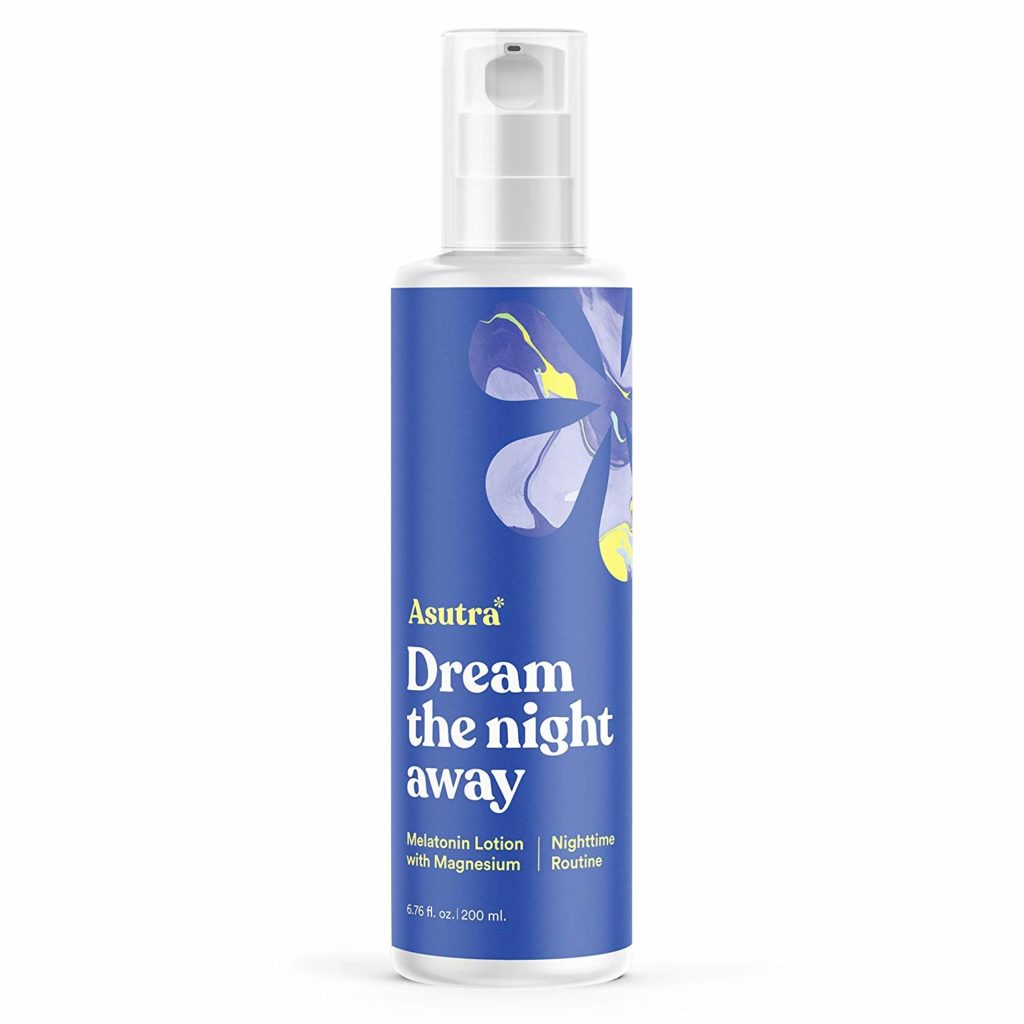
Photo courtesy of Asutra
Whether you’re staying in a budget bedroom or posh pad, it can be difficult to get decent shuteye in a new environment—especially if your jetlagged. Forget pillow spray. This product penetrates skin deep faster than you can count sheep. I first tried this lotion on an overnight flight from Chicago to Paris and I was impressed by how it helped me fall into a peaceful slumber despite being shoehorned in my coach seat. Bonus points for the lavender and lemongrass scent that eliminated the lingering aroma of the beef stroganoff that was served for dinner. But it’s not just the essential oils that induce sleep. This powerful lotion is packed with transdermal melatonin to aid sleep, magnesium to reduce pain/sore muscles, and a trademarked ingredient called OptiMSM to aid in magnesium absorption. It’s all topped off with hypoallergenic almond oil and shea butter to hydrate even the most sensitive of skin types. For best results, you’re going to want to apply the lotion (approximately 5 ml) 30 minutes before sleeping, two hours before if you have problems getting to bed early—or can’t turn off the in-flight entertainment.

Photo courtesy of Roques O’Neil Therapie
Be it a ranting seatmate, your overly tired (read: crabby) kids, or the snooty waiter who won’t be bothered by your dietary restrictions, dealing with people (even those you love dearly) can be one of the most taxing aspects of a vacation. If you feel like you’re about to lose it, spritz a little Aura spray around yourself and take a long, deep breath. The combination of rosemary, fragonia, and rosewater will help you exchange negative energy, stress, exhaustion, tension, and sadness with clarity, balance, calm, and optimism. I don’t know about you, but I need this even when I’m not traveling—thank goodness it comes in a larger size.
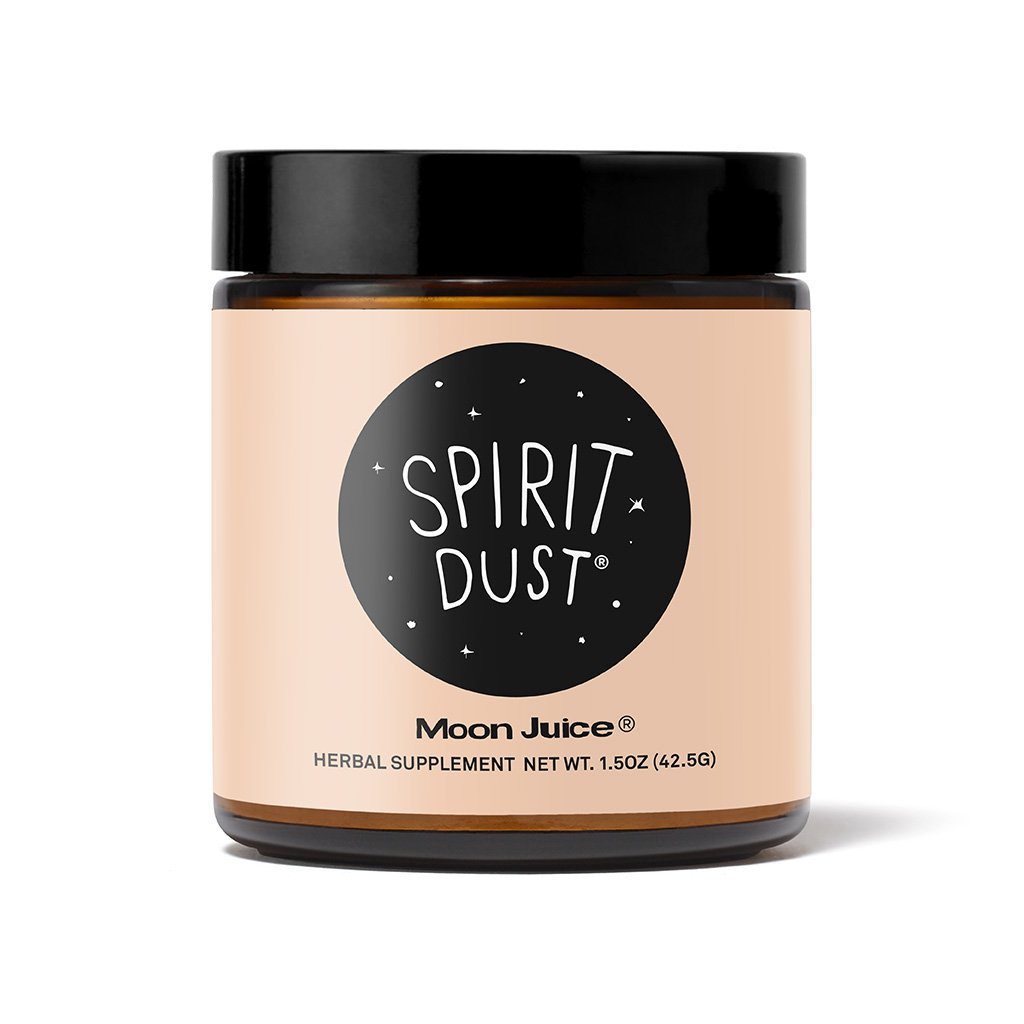
Photo courtesy of Moon Juice
Drink your way into a stress-free vacation sans booze with this healthy concoction of reishi, ashwagandha, astragalus, mimosa bark, dan shen, longan berry, and goji. I know what you’re thinking: A margarita sounds so much more appealing, but trust me when I say this “dust” tastes better than it sounds—especially considering you’re only mixing 1 teaspoon into your coffee, milk, smoothie, or other favorite beverage. Note this product has progressive results, so start scooping the powder into your drinks five days before traveling in an effort to feel calm, balanced, and upbeat. I love this product, but if that doesn’t mean anything, so does Gwyneth Paltrow.
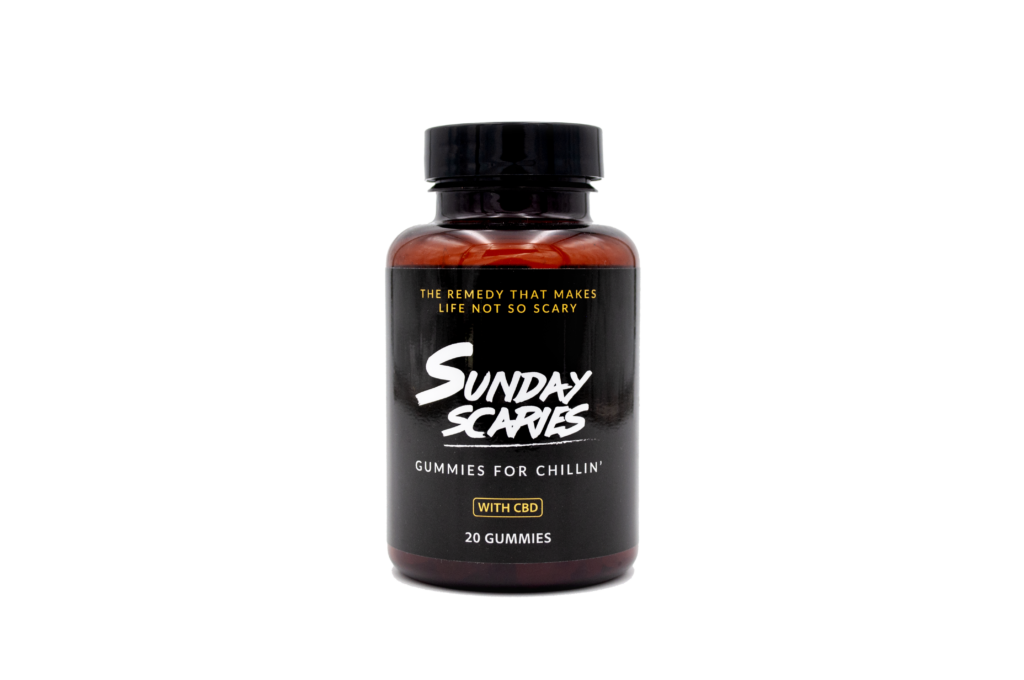
Photo courtesy of Sunday Scaries
CBD is all the rage right now, so I admit I was a bit skeptical about these cute little bears—especially after tasting how delicious they were! All of that skepticism went out the window 20-minutes later when the mood-enhancing benefits kicked in. While the name suggests this product will help you get rid of Sunday night anxiety before a new work week commences, I found that these gummies (legal and natural CBD anxiety relief with no THC) are perfect for helping me relax during a flight—especially an overnight jaunt—or if I get anxious about making a connecting flight. Honestly, they are likely to do the trick in any circumstance, but keep in mind that you’ll feel a bit sleepy, so heed my warning: Don’t chase these suckers down with one too many libations. The chews are also available in a vegan formula for those with dietary restrictions.

Photo courtesy of Mio Skincare
I admit that it was the name that encouraged me to purchase this product (I don’t even take baths at home!), however, I appreciate a good soak when I’m traveling because I’m more apt to relax and take my time. Not to mention, I love a good hotel room tub when available. This particular product is great if you’ve been on your feet sightseeing all day as the Epson salts, arnica, and Mio essential oil blend help relax both your muscles and your psyche at the same time. While it’s always a good idea to apply lotion, cream, or body butter after a soak, the addition of andiroba oil and murumuru butter will leave your smooth versus parched long after you’ve drained the water.
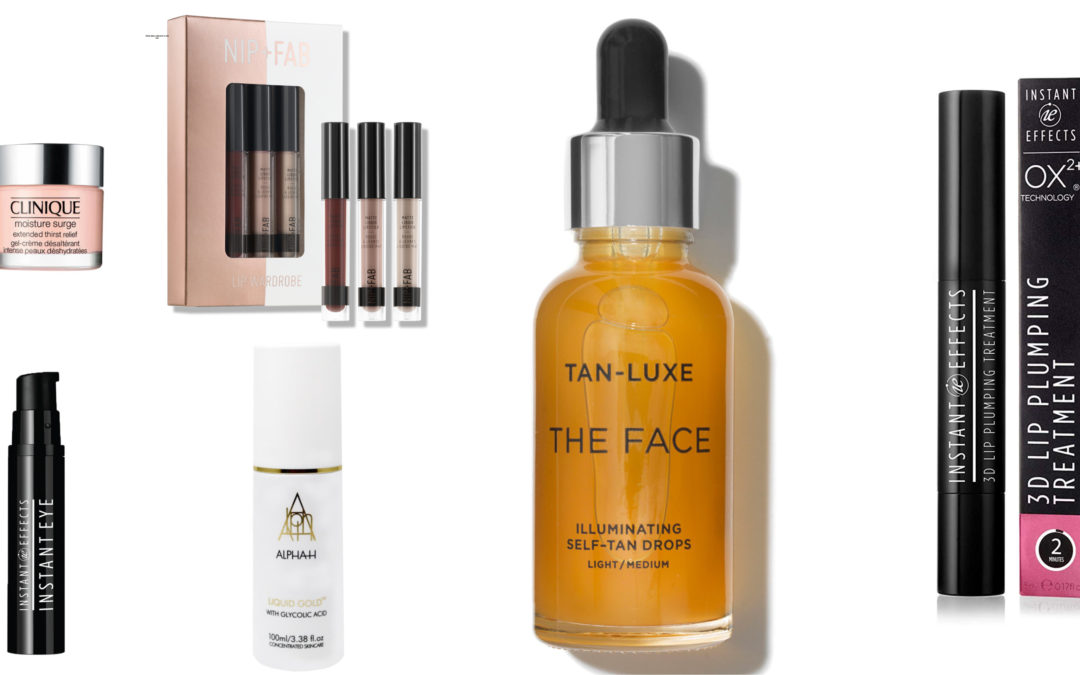
by Rebecca Taras | May 29, 2019 | Beauty, Beauty Products, Cosmetics, Duty Free, Flying, Makeup, Skin Care, Skincare, Traveling with Style
Truth: I get pretty excited about the beverage service cart on an airplane — even the food cart despite the fact that I actually rarely eat the meal (I am big into packing healthy goodies and not-so into overly cooked pasta and mystery meat.) But one rolling in-flight feature I could never get on board with is the duty free boutique. I think I can count on one hand the times I actually saw someone purchase something. Seriously, who buys that stuff? Well, on my Aer Lingus flight from Paris to Dublin, I was the sucker who raised my hand when the stewardesses quietly repeated “gifts, cosmetics, fragrance…”
Even worse, I strategically planned what I was going to purchase before they even made it halfway down the aisle. The good news is that I got a lot of loot for a little under 130 euros. The bad news is that not everything was on-point—my decision-making must have been influenced by my Bloody Mary. Whether you have a weak shopping moment in the friendly skies, the department store, or online, here are the products that I think are worth the splurge (and which you should skip.) Editor’s note: the prices listed are what I paid Duty Free and the exact same kits may not be available online or in stores.
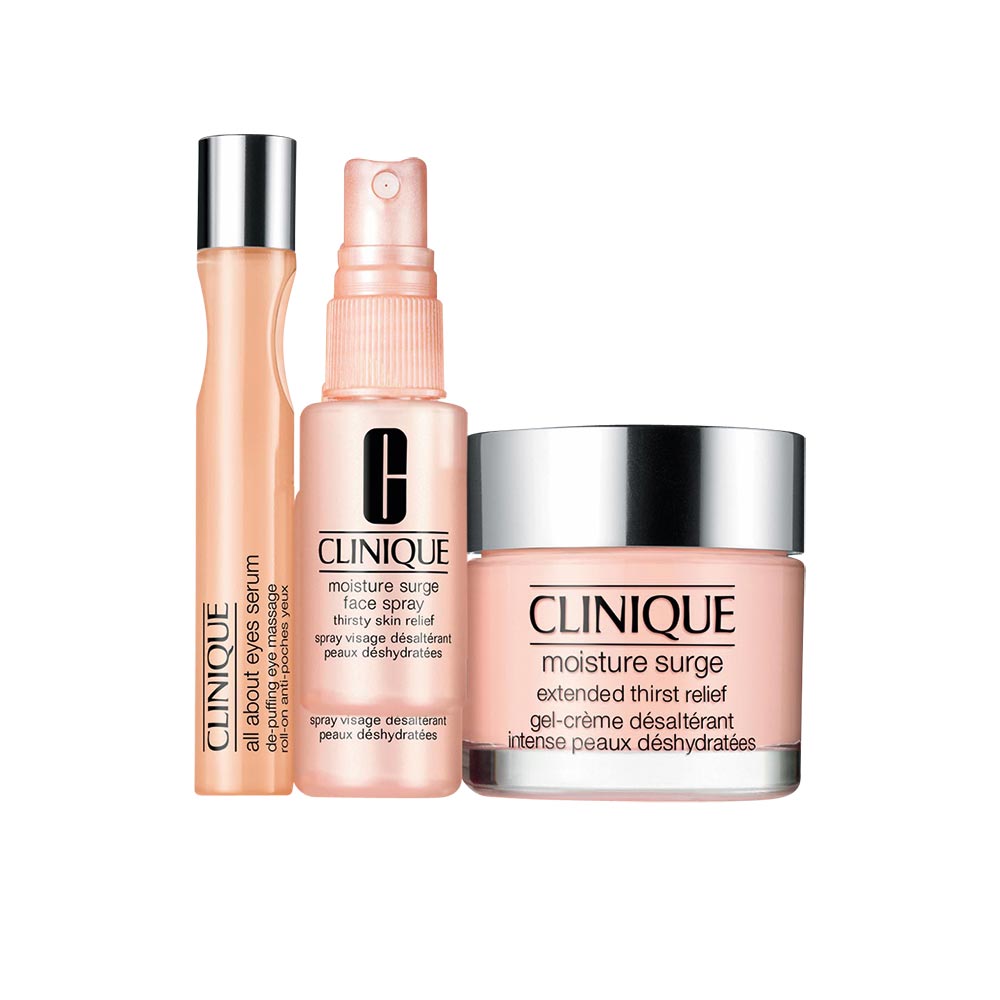
Photo courtesy of Clinique
I wasn’t one of those teens who learned the importance of a skin care routine via Clinique’s famed three-step system. In fact, I think the only time I purchased anything was when it was Bonus Week back in my high school years (Black Honey lipstick forever!). As an avid traveler, I’m constantly battling a dehydrated complexion, so I am naturally drawn to any product that promises a serious moisture surge. For €32, I thought the box would be comprised of all travel sizes, but much to my surprise, there was a generously sized (75 ml) Moisture Surge and 15 ml All About Eyes Serum. The Moisture Surge Spray came in at 30 ml. It’s convenient for in-flight misting and the active aloe in the formula kept my skin from feeling tight. The moisturizer promises 72 hours of continuous hydration and while that’s really difficult to judge because I religiously slather on product morning and night, I can say that it instantaneously gave my skin a wonderful dewy glow—yet I was still able to wear makeup without it sliding off. I particularly enjoyed the cooling sensation upon contact (especially in-flight) and the addition of caffeine helped fade signs of fatigue associated with jet-lag. Verdict: I’d definitely repurchase any of the products in this kit, if not the entire kit itself amidst another weak in-flight moment.
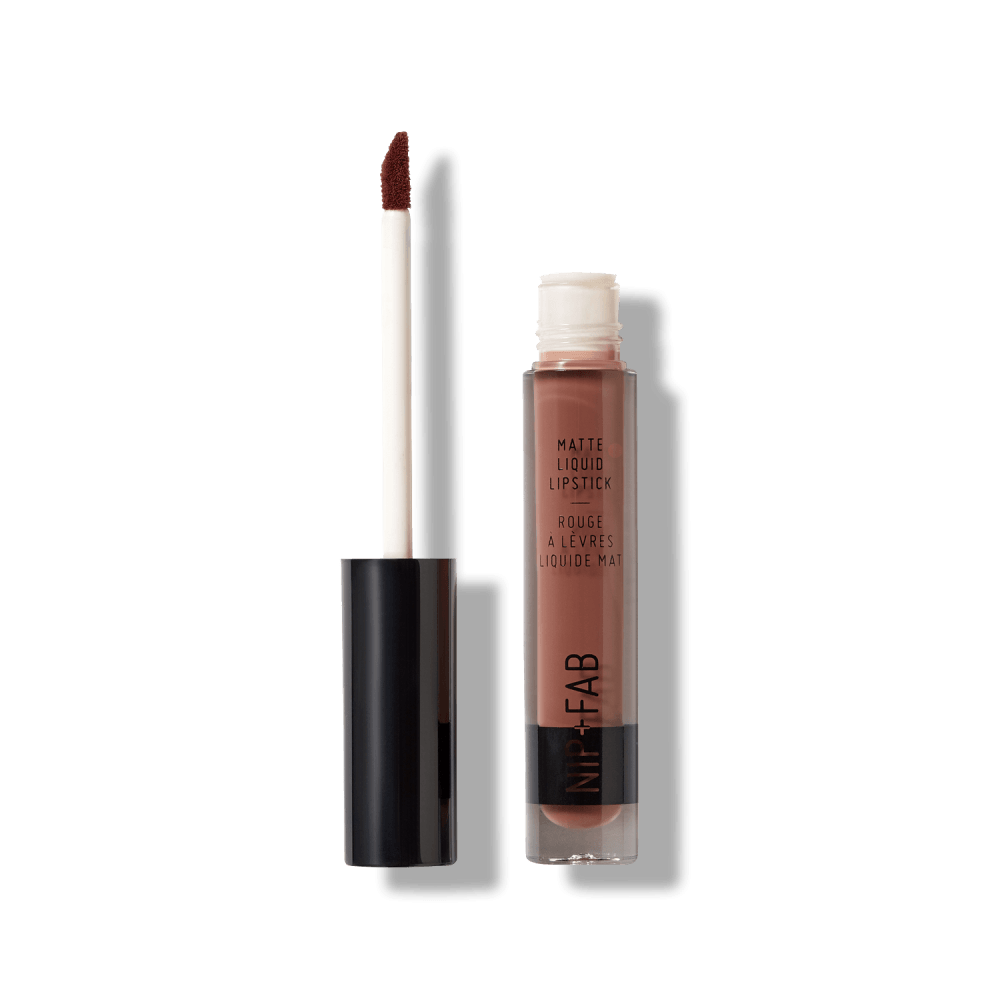
Photo courtesy of Nip + Fab
I really wanted to love this one, but the “universally flattering shades” (nude, petal pink, and mauve) made me look more tired than I actually was, so I prefer to stick with my go-to red lippie. I even tried their suggestion for layering…nope. This is not to say these hues wouldn’t look great on someone with a different skin tone or hair color—the formula is really nice; non-sticky and long-lasting. I DID love the espresso lip liner because it was easy to create great definition and it helped my own lipstick stay put for hours. Verdict: As someone who handles copy for top beauty brands, I give this brand props for the product description as it reeled me in hook, line, and sinker. However, it’s not a repurchase for me as the hues made me look like I had the blues.
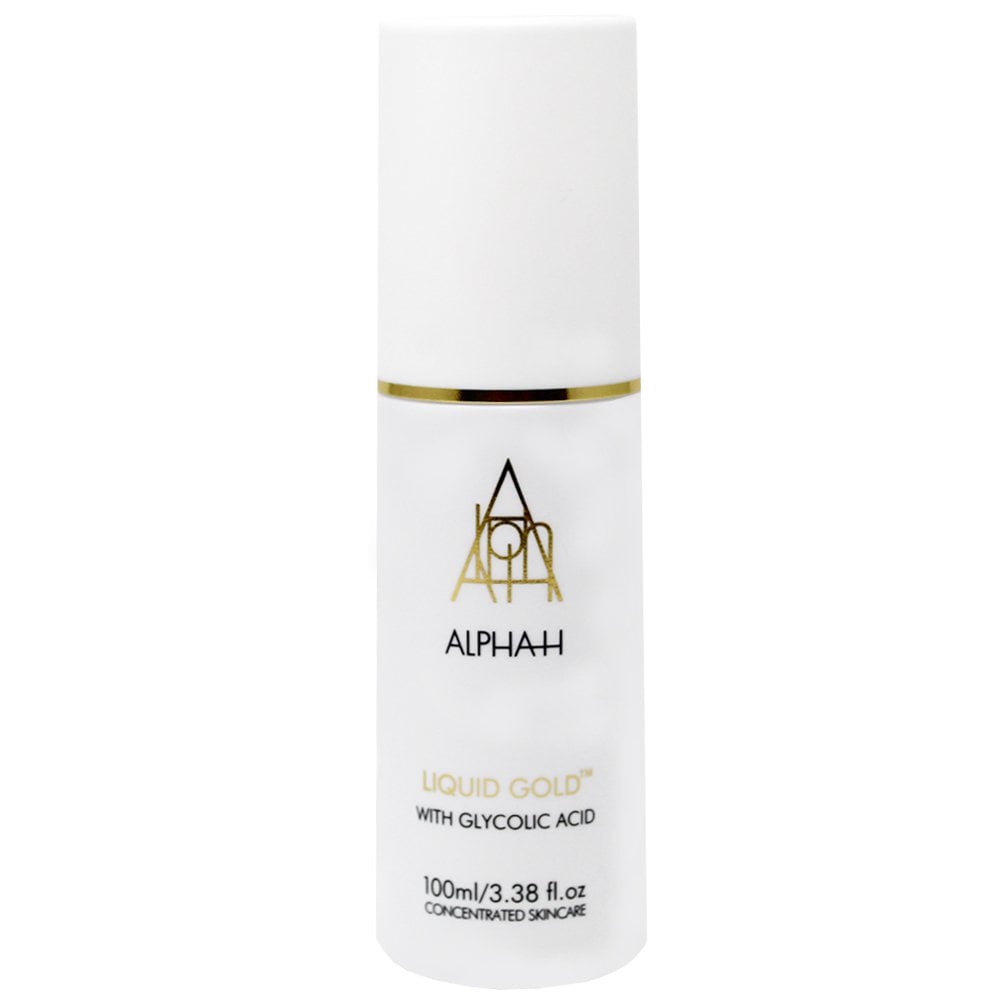
Photo courtesy of Alpha-H
Mechanical exfoliants (scrubs) and gommages rarely remove all of my dead skin cells, so I like something with more of a punch. I was under the impression that this product was going to be more of a viscous consistency because it’s described as an “acid toner, exfoliator, serum, and moisturizer in one.” Well, it’s a straight-up liquid comprised of 5 percent glycolic acid, licorice extract, and silk proteins. I tried the product on its own by found it too drying—anything but moisturizing—so I followed up with a serum and moisturizer as suggested. It did, however, dissolve the dead skin cells on my forehead after just one use. This is definitely a product that requires a patch test before starting as it’s quite strong and could potentially overly stimulate sensitive skin. With long-term use, the product promises to reduce wrinkle depth and skin roughness while boosting moisture levels. I am only using it about two times a week for now until my skin gets used to the level of acid. Verdict: I had to pull back on this one because I went through an uncomfortable bout of eczema, but I’ll give it another try as it’s recognized as a “cult favorite” and beauty award winner.
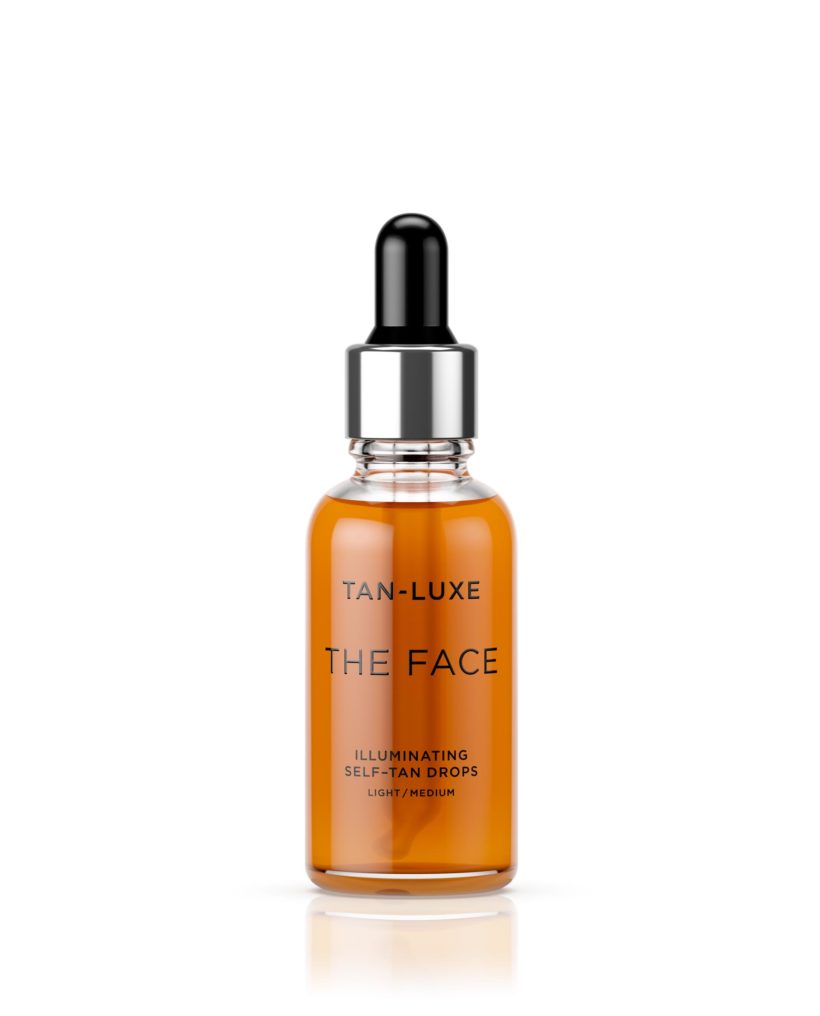
Photo courtesy of Tan-Luxe
I am not a sun bunny and while that’s helped me hold onto somewhat of a smooth and even complexion (the sun breaks down the collagen in the skin) at 40 years of age, there are periods throughout the year where my skin looks downright pasty. I used to spritz on an aerosol self-tanner, but along with color, I would gain dryness and occasionally, breakouts. These self-tan drops alleviate all of those concerns because the product hydrates while delivering a natural looking tanned face and neck. Simply mix 2-12 drops with your serum or moisturizer (depending on how deep of a tan you want to achieve) and apply as usual. The color gradually fades evenly, just like a summer tan. Verdict: I will 100 percent repurchase this product. It’s without a doubt the best face self-tanner I’ve ever tried. The results are natural and my skin is left soft and supple. What’s not to like?

Photo courtesy of Instant Effects
I was lured into this product (and its pout plumping sister) due to the fact that it touted a “Best Beauty” honor. That and the fact that flying, a good French Bordeaux, and erratic sleeping patterns aren’t doing my peepers any favors. This product says it’s been “proven” to reduce under eye circles and puffiness within 15 minutes of application. I can’t say I noticed any real dramatic change. Perhaps for me, the results will be more progressive—clinical trials have shown an improvement in skin elasticity and a reduction of fine wrinkles after six weeks. Verdict: This one is a pass for me. I’ve seen more instantaneous results with Obagi’s ELASTIderm Eye Cream.

Photo courtesy of Instant Effects
While I did achieve an immediate plumping effect and improved hydration level, the effects definitely didn’t last four days. It’s a nice little pucker pick-me-up, however. Verdict: I will most likely not repurchase this product as plumpers of any kind tend to dry out my lips, thus eventually leading to a counterproductive result.
Did you ever purchase in-flight beauty products? Which ones did you love?
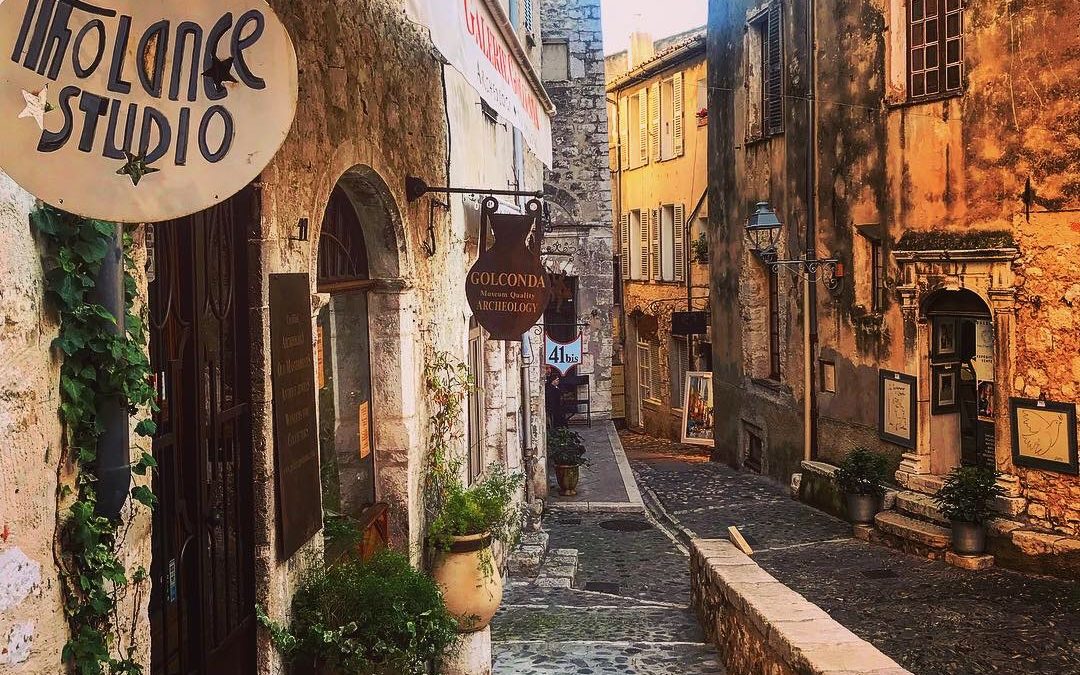
by Rebecca Taras | May 29, 2019 | Charming French Villages, Cote d'Azur, France, Historic, History, Luxury, Luxury Hotels, Perfume, Rebecca's stories, South of France, Travel
There’s no shortage of charming villages in France and while there are still many on my bucket list, I’ll never tire of Saint-Paul-de-Vence. Between the winding cobblestone streets, the remnants of some of the greatest artists and literary greats, and quaint restaurants with breathtaking views, Saint-Paul-de-Vence is worth venturing the short (and beautiful) drive on the winding roads if you’re visiting the South of France. Perched high on a hilltop, It just might arguably be one of the most beautiful villages in the Cote d’Azur…if not the entire country itself.
Fun Facts
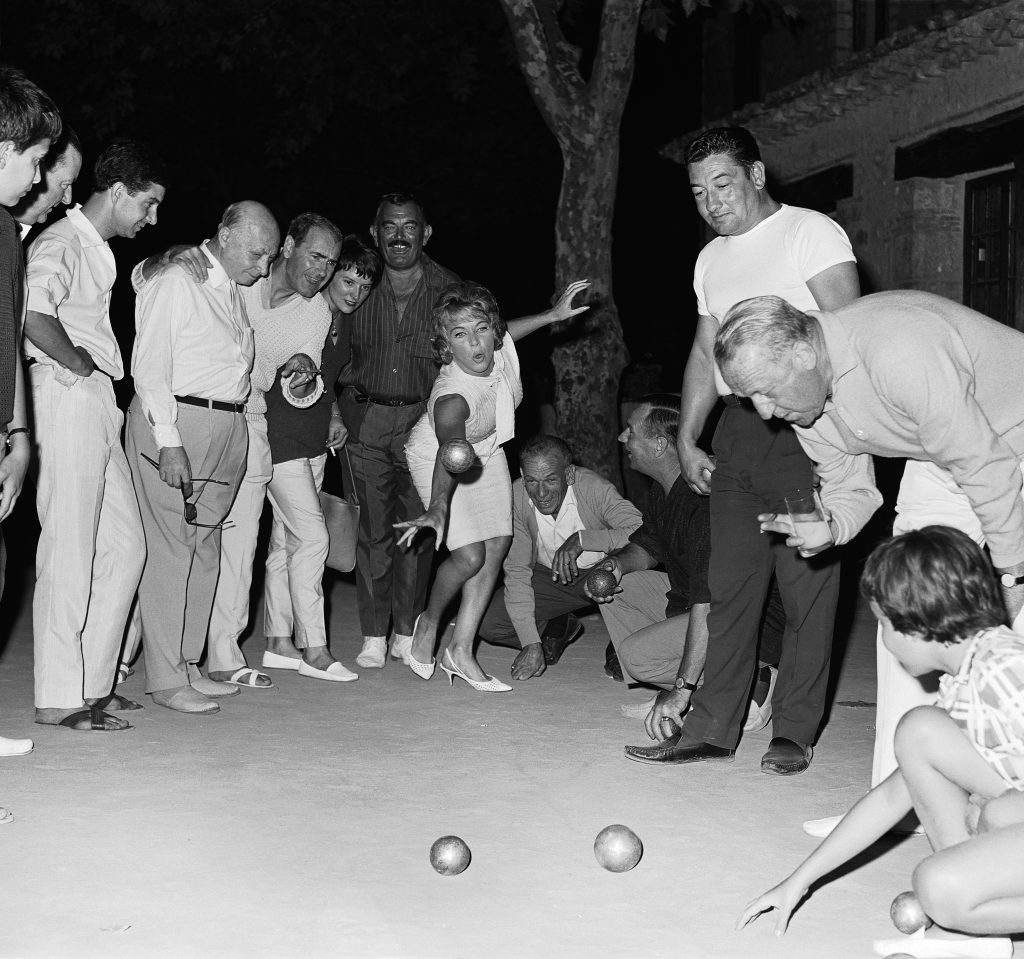
Singer Line Renaud: © Office de Tourisme de Saint-Paul de Vence – Photographe: Jacques Gomot
—Originally known as Saint-Paul, the village acquired the name Saint-Paul-de-Vence because of its proximity to the commune of Vence. This was a smart idea as it differentiated this dream world from nine other French villages bearing the same name. The cognomen Saint-Paul-de-Vence became official in 2011.
—Saint-Paul was a border stronghold in the Middle Ages (1388) when the County of Nice switched its allegiance from Provence to the County of Savoy. It remained a border town until 1860 when Savoy was annexed to France.
—The village became more accessible in 1911 due to a newly erected tramway between Cagnes-sur-Mer and Vence, via Saint-Paul. Aside from attracting curious visitors, the new method of transportation also made it possible to export
—During the roaring ‘20s, Saint-Paul started to attract what we now know as some of the greatest artists in the world— Paul Signac, Chaïm Soutine, and Raoul Dufy were among the artisans at the forefront. Captivated by the rich array of colors and natural lighting, the tranquil village was their muse.
—While the Côte d’Azur has long been associated as a playground for the rich and famous, Saint-Paul-de-Vence was on their radar, too. The paradisiacal village has attracted the likes of an array of notable personalities, to include Ernest Hemingway, Zelda and F Scott Fitzgerald, Yves Montand, Simone Signoret, James Baldwin, Marc Chagall, Charlie Chaplin, Vittorio de Sica, Curt Jurgens, Orson Welles, Line Renaud, Liza Minnelli, Kirk Douglas, Gene Wilder, and Michael Caine, to name a few.
—When you’re walking on the beautiful Provencal-style cobblestone streets, take note that they were barren until the ‘50s when Mayor Marius Issert turned the streets into what you can see today. Also interesting, the very first cobbles were brought back from the beach at Cagnes sur Mer.
Where To Stay
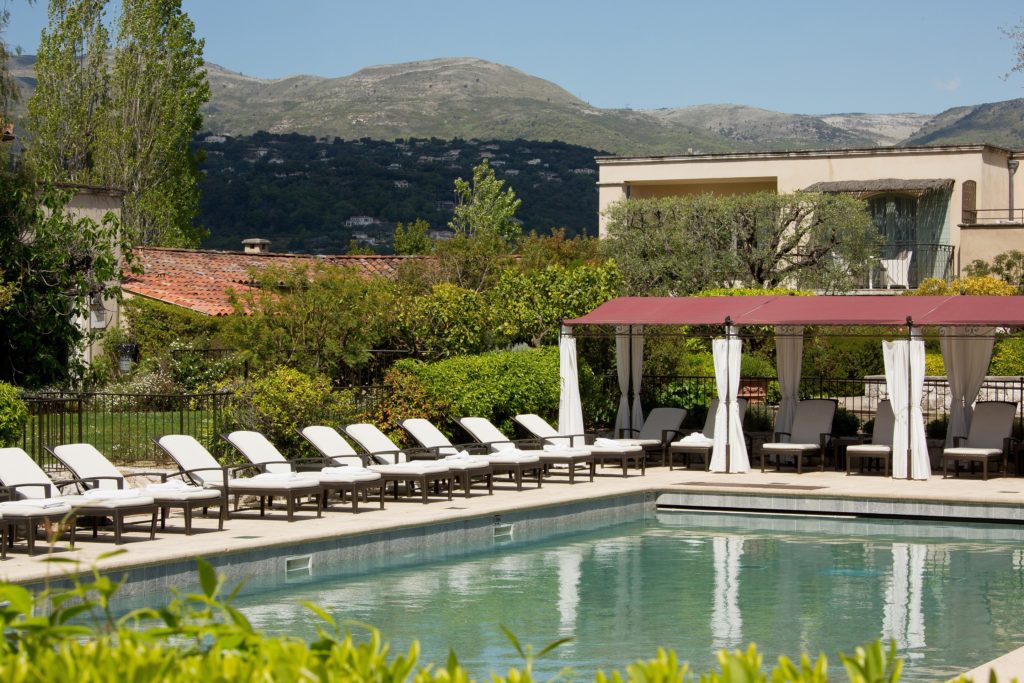
Photo courtesy of La Mas De Pierre
La Colombe d’Or: One can’t discuss lodging options in Saint-Paul-de-Vence without suggesting this historic gem. Back in 1920, the property was known as a cafe and bar called Chez Robinson. In an effort to support his wife Baptistine (Titine), its proprietor—painter/art collector Paul Roux—made additions to the property so that it could facilitate a small three-room inn known as Colombe d’Or. At this time, it served as an artist’s playground for legends such as Picasso and Matisse. Their work, along with pieces from several other greats, still resides in the hotel today for your viewing pleasure. Over the years, the property became a sought-after retreat for celebrities and A-listers alike. Luckily, the Colombe d’Or of today can accommodate more guests—it boasts 13 rooms and 12 suites to be exact. You’ll find modern-day conveniences such as dry cleaning and room service. Speaking of food, even if you’re not a guest, you’re going to want to eat at the on-site restaurant. The menu features quintessential Provencal-style dishes such as stuffed baby vegetables, baked Provençal tomatoes, and a variety of fresh fish and meat dishes. If you visit in the warm weather months, you’ll be treated to the secret garden-like outdoor terrace. As of the this post, room rates range between 250 and 430 euros per night depending on room selection and season.
Le Saint Paul: Also conveniently located within the village, this five star property (a previous residence from the 16th century) possesses 16 rooms and terrace suites with sweeping views of the Medieval village and area surroundings. Take a meal out on the sprawling terrace where you can choose from menu items that correspond with the season. It’s worth taking an extra cup of coffee (or glass of wine) to soak up the awe-inspiring environs the French way—by taking your time. As of this post, room rates range between 250 and 630 euros per night depending on room selection and season.
Le Mas de Pierre: I had the pleasure of recently staying at this Eden and let’s just say that I didn’t want to leave! Le Mas de Pierre is a five-star boutique hotel (Relais and Chateaux) that’s located just on the outskirts of town. A mas, to be clear, is defined as a Provençal-style farmhouse, which is exactly what this place feels like on an elevated level. The property is surrounded by spectacular landscape that includes commanding mountains; centuries-old olive trees; and aromatic fig, orange, and lemon trees that dot the hotel grounds. As there are less than 60 rooms (cleverly divided amongst several buildings for the utmost in privacy), the feeling here is more like staying at a private estate than a big hotel. The service is impeccable, the decor is on-point, and I love that every room has a private (and generous) balcony or garden. Flying doves (literally) make their way around the grounds, on-site herb and vegetable gardens provide inspiration for the chef, you can visit the hotel owner’s birds in the exotic garden, and the last greenhouse in this historic area of greenhouses is used to cultivate all the orchids and plants in and out of the hotel. As of this post, room rates range between 215 and 1848 euros per night depending on room selection and season.
Where To Eat
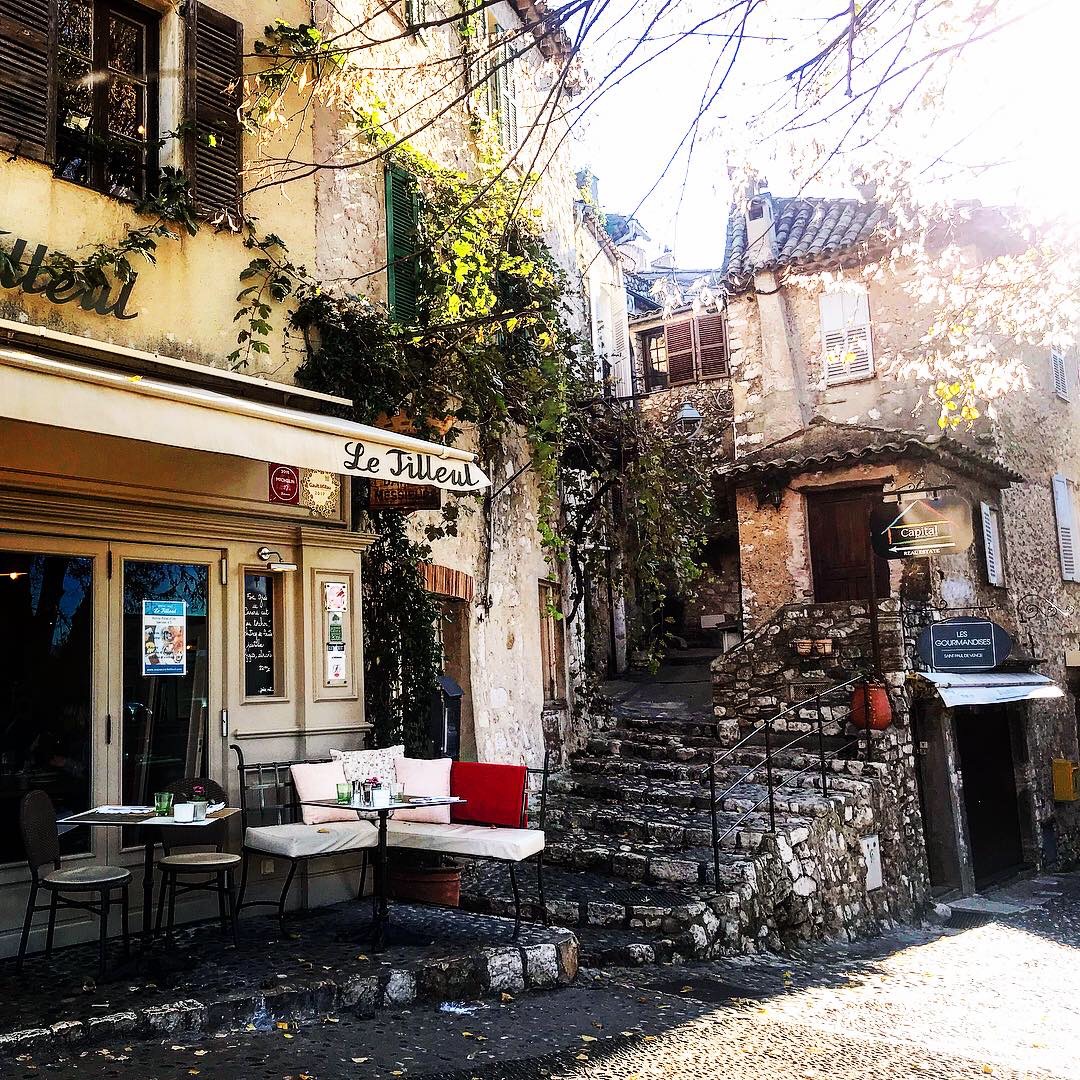
Le Tilleul: Photographed by Rebecca Taras
Le Tilleul: Not only is this charming eatery perfectly positioned for people watching and immersing yourself in village life, the food is fantastic. The seasonally changing menu is gastronomic, yet comfortable—you can even find a simple sandwich on the lunch carte if you aren’t in the mood for a feast, but still want to enjoy the views. When I visited with my boyfriend, it was a crisp fall day, but blankets were available at all of the chairs. We used ours (and a bottle of red wine) to keep warm. Along with the complimentary olive tapenade, we shared two of the starters of the day: shrimp with avocado cream (artfully nestled in a small, clear glass) and cured salmon gravlax, which was served with a mini salad lightly tossed in a zesty citrus dressing. For the mains, my S.O. had a filet with nicoise olive mashed potatoes and I opted for the linguini con le vongole—aka linguini with clam sauce. Even though we cleaned each and every plate, we still managed to save room for one of the house-made desserts: a berry coulis and cream trifle.
La Brouette: While this restaurant is not exactly French, the Danish cuisine is as delectable as the owners (and hosts) are charming and hospitable—it wouldn’t be around for 40-plus years otherwise! Specialties include Baltic herring, house-marinated and smoked salmon, smoked trout, and a selection of Danish desserts. During the warm weather months, make a reservation for the rustic, lush patio where you can catch the fireworks on selected nights during the summer. When the chill hits the air, the inside is just as cozy, thanks to a warm burning fireplace.
(See above for information on the restaurant at Colombe d’Or.)
Where To Shop
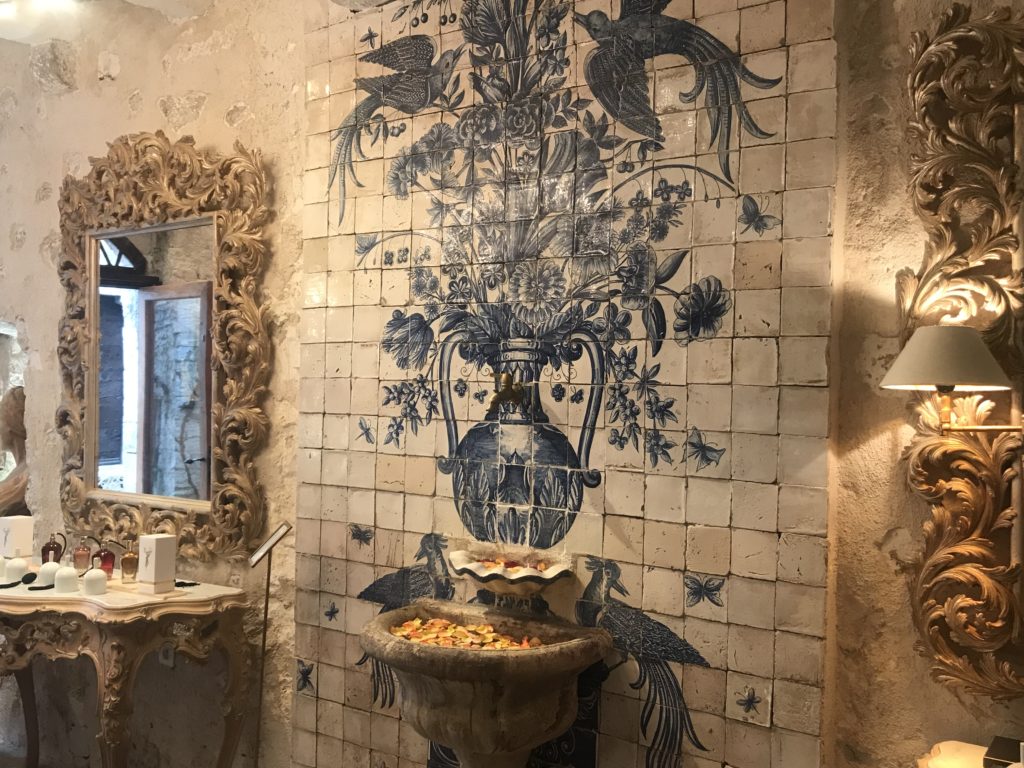
La Maison Godet: Photographed by Rebecca Taras
Galerie Frédéric Gollong: This illustrious gallery one of the first art spaces to open in Saint-Paul de Vence. Along with works from historic greats such as Matisse, Picasso, Valodon, Alechinsky, Braque, and Miró, you’ll also find more contemporary pieces from Van Velde, Wimmer, Berthois-Rigal, and Coignard, to name a few.
Galerie Le Capricorne: A diverse gallery that features a wide array of classic and contemporary works in various styles, to include landscapes, street art, abstract, pop art, and illustrations. You’ll find stunning pieces from great masters like Picasso, Chagall, Matisse, and Braque, as well as contemporary creations from artisans such as Michel Dejos, Isabelle Plante, Sylvia Karle-Marquet, Claude Fauchere, and Christophe Gallard, among several others.
La Maison Godet Parfum: A personal favorite, this perfume house dates back to 1901, and has since then whipped up umpteen fragrances that pay homage to everything from cognac (the family’s first business) to the muses of some of the greatest artists milling around Saint-Paul-de-Vence back in the day. All fragrances are made locally and it’s not uncommon that they contain ingredients found right in the village—like figs from the tree at Colombe d’Or. The current “nose” is the great granddaughter (Sonia) of founder Julien-Joseph Godet. If you’re lucky enough, she’ll be in the shop the day you visit; brace yourself for a real treat.
La Petite Cave de Saint Paul: Housed in a 14th century wine cellar, this cavernous shop offers an array of wines from the region of Provence. Wine and spirit aficionados will appreciate the well-curated selection of Cognac, Calvados, Armagnac, champagne, Bordeaux Grands Crus, and some of the best bottles from Burgundy and the Rhone Valley.
Where To Visit
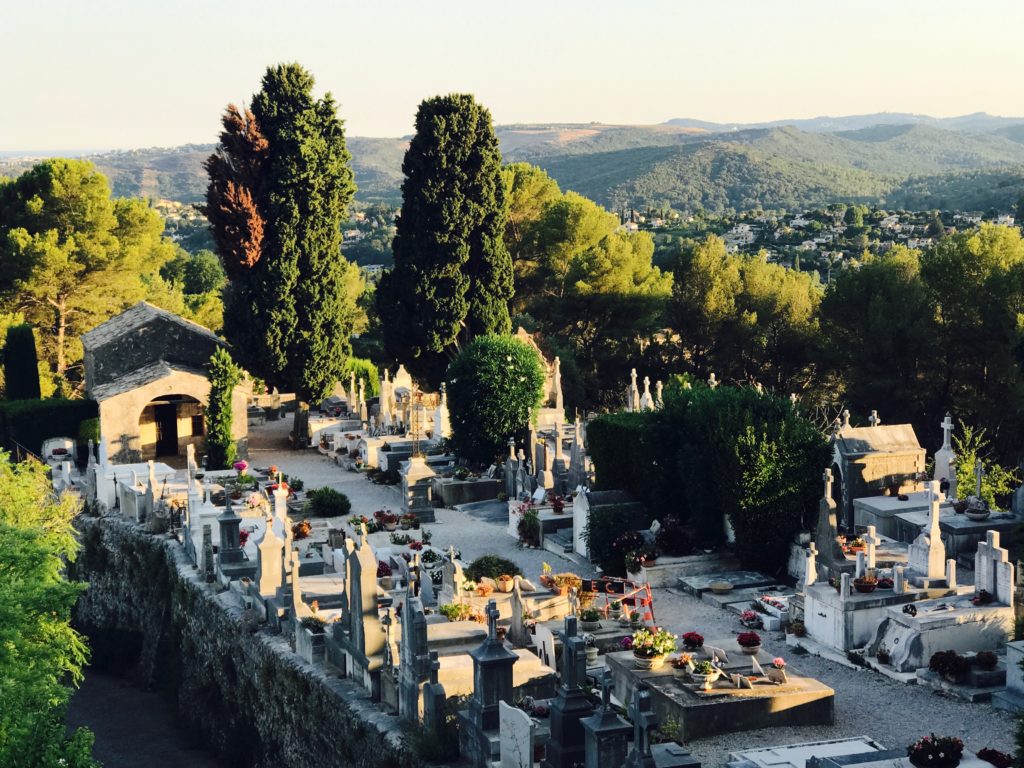
Cimetiere de Saint-Paul-De-Vence: Photographed by Rebecca Taras
Fondation Maeght: Going on 50-plus years, the Fondation Maeght features the largest and most influential collections of 20th century art in all of Europe.
Musée de Saint-Paul: Take a deeper dive into the artistic history of Saint-Paul by visiting this well-appointed museum that’s housed in a stone house from the 16th century. Exhibitions change regularly and typically feature the works of artists whose works are associated with the village.
Cimetière de Saint-Paul-De-Vence: Dating back to the 16th century, this quaint cimetière is the resting place of famous locals such as Chagall (known for his paintings of the area) and Marguerite et Aimé Maeght, art gallery owners and dealers who lost their son Bernard at the age of 11—he is also buried here. Fondation Maeght became their project to get through this tragedy.
Jacques Prévert’s House: Ask a local to point you in the direction of French poet and screenwriter Jacques Prévert’s house, an unapologetically charming stone abode where he lived with his wife his wife Janine. Prévert was friends with Pablo Picasso and Paul Roux, owner of the Colombe d’Or.
Place de la Grande Fontaine: A vaulted washhouse serves as a memory for the old town square. Today, it’s a spot for locals to sell farm fresh produce.
Planning Your Trip
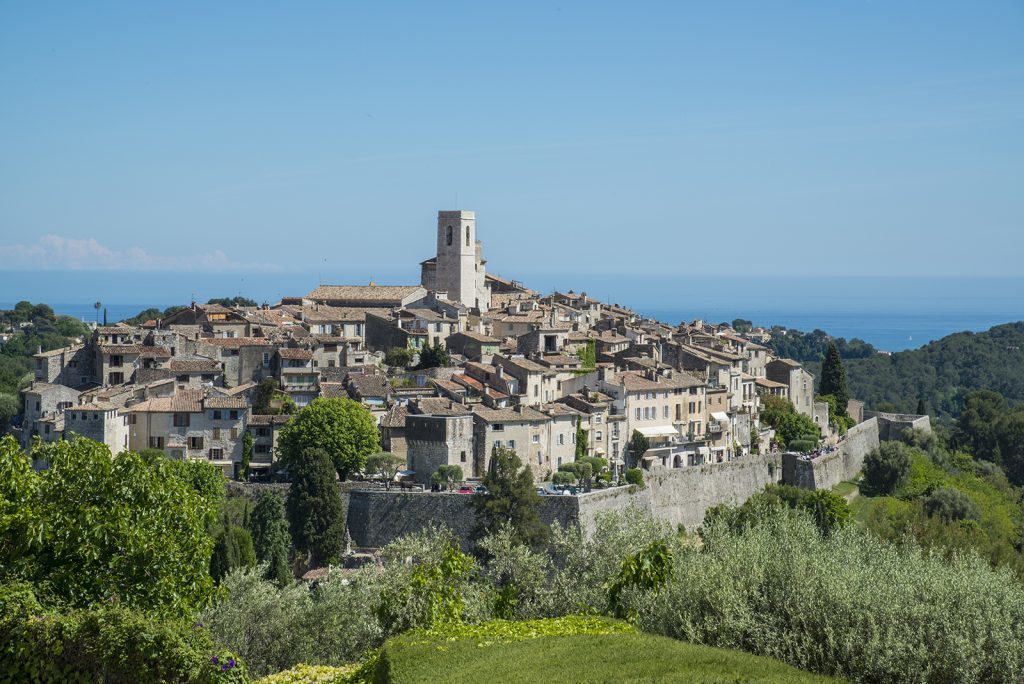
Le Village de St.-Paul-de-Vence
© Office de Tourisme de Saint-Paul de Vence – Photographe: Elisabeth Rossolin
By no means are my suggestions a complete list of what you can eat, do, and, see in Saint-Paul-de-Vence, but they are definitely both personal and popular favorites. Don’t be afraid to visit in the off-season as summer can be overwhelmingly crowded, which makes it difficult to book a table at a restaurant, a room at a hotel, or to full enjoy the shops and sites. Have you ever visited this charming French village? What are your favorite places?
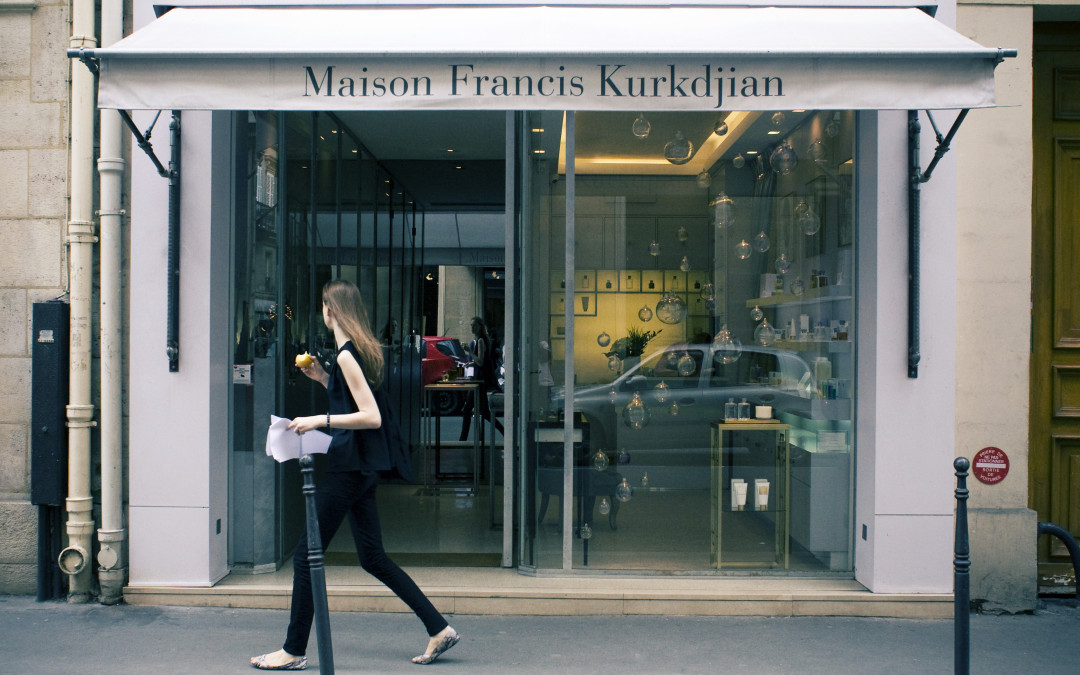
by Rebecca Taras | Mar 1, 2019 | France, Perfume
When I attended the Bal Magique du Maroc for the Woman’s Board of The Alliance Française de Chicago back in 2012, I had no idea that years later I’d be chatting with award-winning perfumer Francis Kurkdjian at his Fragrance Maison in the Marais arrondissement in Paris. Not only was he in attendance at the ball, but he created an orange-filled tile fountain that permeated the dance floor with an exotic scent created especially for the fête. Such installations are part of what makes Kurkdjian such an olfactive genius. In fact, he was honored with the Chevalier des Arts et des Lettres by the French Government in 2008.
Perhaps even more familiar to the average consumer, however, would be Kurkdjian’s scented imprint on the mainstream fragrance world: Starting at the tender age of 25, the perfumer was responsible for formulating such iconic scents as Le Male for Jean-Paul Gaultier, My Burberry and Narciso Rodriguez For Her, among others.
In 2001, he also made a name for himself by becoming the first perfumer to open a bespoke custom fragrance workshop. Eight years later, he founded his eponymous House of Perfume, where this interview took place. I sat next to the Versace-clad Frenchman, among all of his ambrosial creations, thankful that I opted to spritz on a little perfume before I left the door that morning.
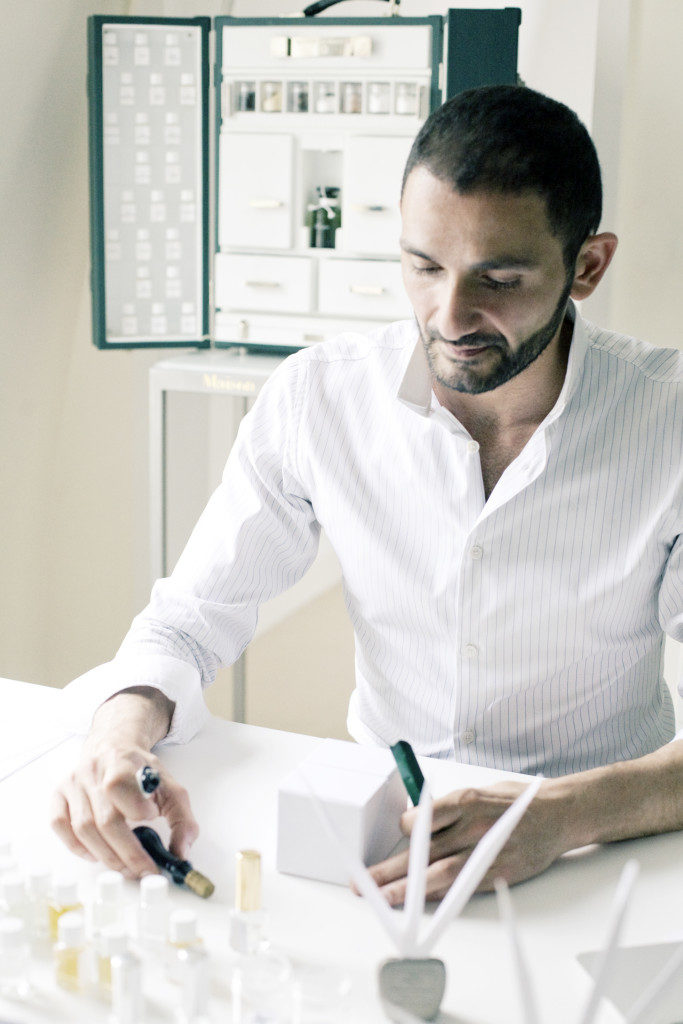
Photo courtesy of N. Baetens.
Just two years out of college you developed Le Male, one of the world’s most popular fragrances, with 40-plus to follow. Is it safe to say that you’re a natural perfumer? “No, it’s not natural. I always try to push my boundaries of the craft, but there is no secret. At the end of the day, you have to pretend it’s easy because no one wants to feel pain, to see pain. I’m not saying it’s painful to make a fragrance, but it’s all about work.”
What is your creation process like, and what steps do you take for each individual project? “Creating perfume is like writing a book. It’s storytelling. Whether I work for another brand, my brand, or on an installation, what is important is what you have to say and if there is a different way in which you want to say it. So, then when you have the story, making the fragrance is easy.”
“In a way, the inspiration for the story is the most difficult part, as it’s the most intangible part of the process. Otherwise it’s just technique, and technique is work. At some point, everyone can have a good technique, and that’s the difference between the artisan and the artist. You have to be above the technique. You have to master it in such a way that you forget the technique. The technique and the work of the perfumery is the base, and if you don’t have that in mind or if you don’t know how to handle [the technique] then you’ll go nowhere.”
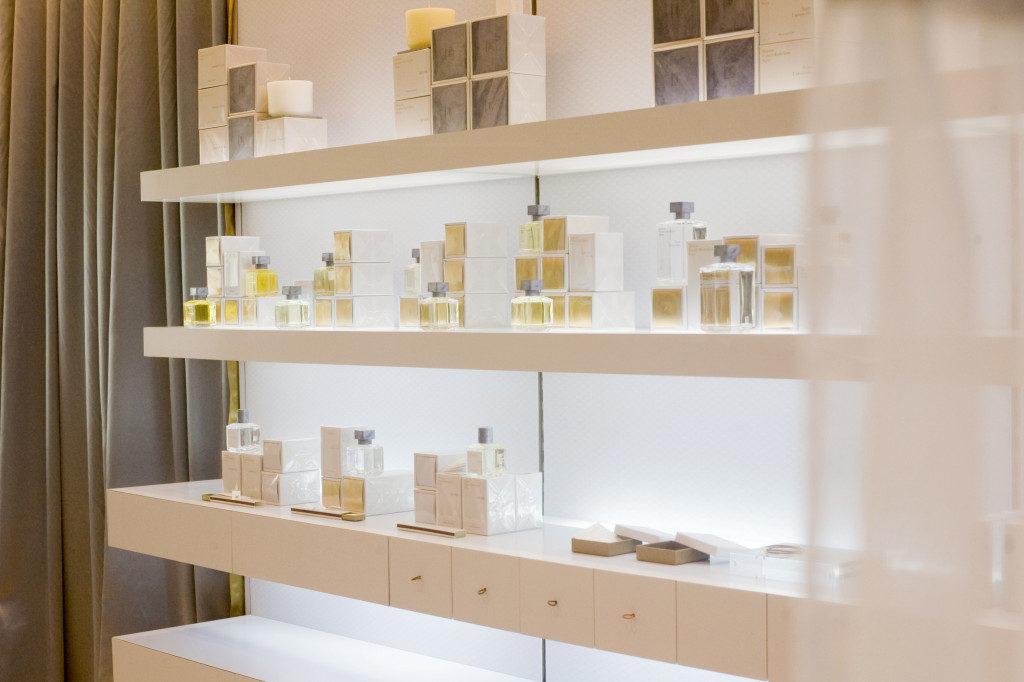
Photo courtesy of N. Baetens.
Where do you seek your inspiration? What inspires you? “I would say the world we live in inspires me because we live in the 21st century, which is very important. I don’t like to be nostalgic. I don’t like to be historical about things from the past—even though you have to learn history to be able to understand today, as well as the future, because history is a cyclical process.”
“The idea of building the olfactif wardrobe became perfect in my mind because I felt the way women were wearing fragrance was not adapted to the modern woman. In my mind, modernity for a woman is about the diversity of each woman and being who they really want to be. I couldn’t see myself just thinking about a woman wearing one type of perfume forever. After all, you change your haircolor, makeup and wardrobe, so why not your perfume? In the past, people would have a different fragrance for different activities throughout the day. This is why you need to know the history, because you must think how it can be managed and twisted to our contemporary lives.”
It’s been said that we naturally gravitate toward essential oils that our body or psyche needs at the moment. Would you say that’s the same idea when it comes to choosing a perfume made with essential oils? “No, I think it goes beyond that because a good perfume is when you forget the ingredients. When you hear music, you don’t go to the notes. I play the piano, so I learned all about music for years. But when I listen to music, it’s not about the notes anymore—it’s about the melody. Perfume works exactly the same way.”
“Even though [perfume] can be somewhat straightforward, like my À la rose for example. Of course, you would expect it to have roses, but it’s put together in such in a way that you don’t smell the rose you were expecting. The ingredients have to disappear behind the emotion. This is when you reach the level of an artistic feeling. You forget the music, you forget the notes.”

Photo courtesy of N. Baetens.
When was the moment that you decided you wanted to branch off on your own? “It took me 10 years to go forward. The first step was when I opened my bespoke fragrances atelier in 2001. The Maison opened in 2009, so it took several years. You have to find the right partner, and have the right people around you. (Editor’s note: Kurkdjian’s business partner is Marc Chaya, a former partner at Ernst & Young.) It’s a question of timing, in my mind. And you can’t rush—it’s never a good idea to rush. I like speed a lot, but sometimes you have to wait a little bit. It’s worth it.”
I know that you are involved in a lot of collaborations. How did you get involved in the installation on the Champs-Élysées in connection with your À la rose fragrance? “I created the perfume À la rose in 2014/2015 for the U.S. and Europe, and a year before in Japan, where it was awarded Best Fragrance at the 2015 Japan Fragrance Foundation awards. I was inspired by a painting called Marie-Antoinette dit à la Rose (Marie-Antoinette with the Rose), which you can see on display at the Champs-Elysées entrance of the Vigée Le Brun exhibition.”
“The portrait is of Antoinette holding a rose in her hand—the same type of rose that I use today in my perfumes. The story behind the painting is fascinating: The original was a scandal because Antoinette was not painted as a queen, but as a bourjois, nonchalant woman. This was done because she wanted to gain popularity with the people of France at the time, but they wound up being shocked instead.”
“So, they had to redo a second portrait in the same pose dressed in her proper attire, etc. I thought the subject behind the painting was very modern, and it showed me that if a subject was modern, the idea of playing around with the name rose—which seems a little bit old fashioned—was relevant at the time. Once the museum heard that my fragrance was inspired by that painting, they asked me to create an installation for the opening of the exhibit.”
Speaking of Marie-Antoinette, can you briefly explain what went into re-creating her original perfume? Who was the initial perfumer? “The name of the original perfumer at the time was Jean-Louis Fargeon. He was from a family of perfumers; his father was the producer for Louis XV. We found the original formulas in the archives from the castle at the National Library of France. With that, we were capable of recreating, recompounding one of the original formulas.”
I was curious to know a little bit more about the room deodorizing papers that you created. “It’s an old idea from the 19th century that was very popular. Before paper it was ribbon. It was called Ribbon des Bruges from Belgium—fabric was less expensive than paper at the time. My papers are more modern due to the packaging and the scent, which incorporates some of the fragrances in the House.”
What are you currently working on? “We are preparing a huge collaboration with Baccarat for early next year. Something rather huge is coming up at the Musée National d’Art Moderne in early February. We are also scent-designing a couple of hotels around the world—Cannes, the Caribbean…”
How long does scent development take? “I could write down a formula and create a fragrance in 20-minutes. Time doesn’t mean anything to me anymore because I’ve been formulating for 20 years. When I first started, it may have taken me eight months. People love timing things—numbers are important to people because it’s tangible. But creation is totally invisible.”
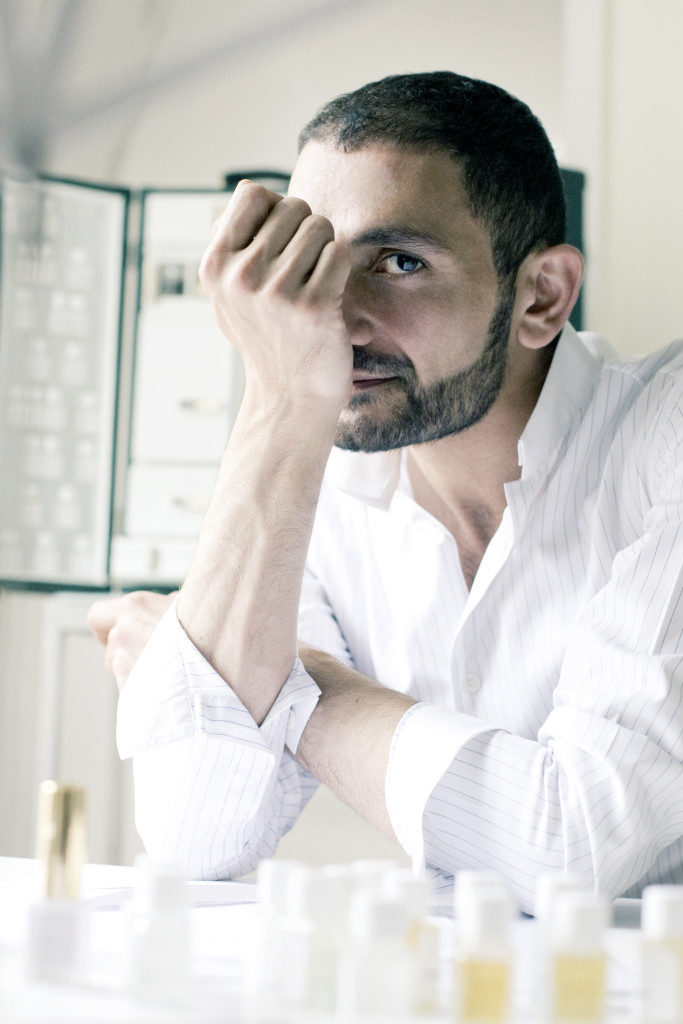
Photo courtesy of N. Baetens.
WTB Signature Questions:
What do you always have in your carry-on when you travel? “I always have a cashmere blanket, laptop, passport, maybe my two cellphones and a charger, keys to come home, and one of my scented leather cards, which scents my personally designed leather bag. We’re launching fragrance-enhanced leather accessories. It’s a technique that was used 800 years ago to scent the leather, but I modernized it by making a wallet, coin purses and things like that. The scent lasts two-to-three years.”
What is one of your favorite travel destinations, and what is on your bucket list? “Anywhere can be super-exciting. It just depends on what you do and who you are with. A journey can be boring if you are bored yourself. It’s more a question of your energy. I’ve seen many wonderful things, I’m very blessed, but what is on my list? As far as the United States isconcerned, I would love to see Niagara Falls and the Grand Canyon. Otherwise, I think it would be more like a journey in time. To go forward 100 years to see what we do with all the mess we are living with now, to see what all this is going to come to. To see how perfume would be. That would be amazing.”
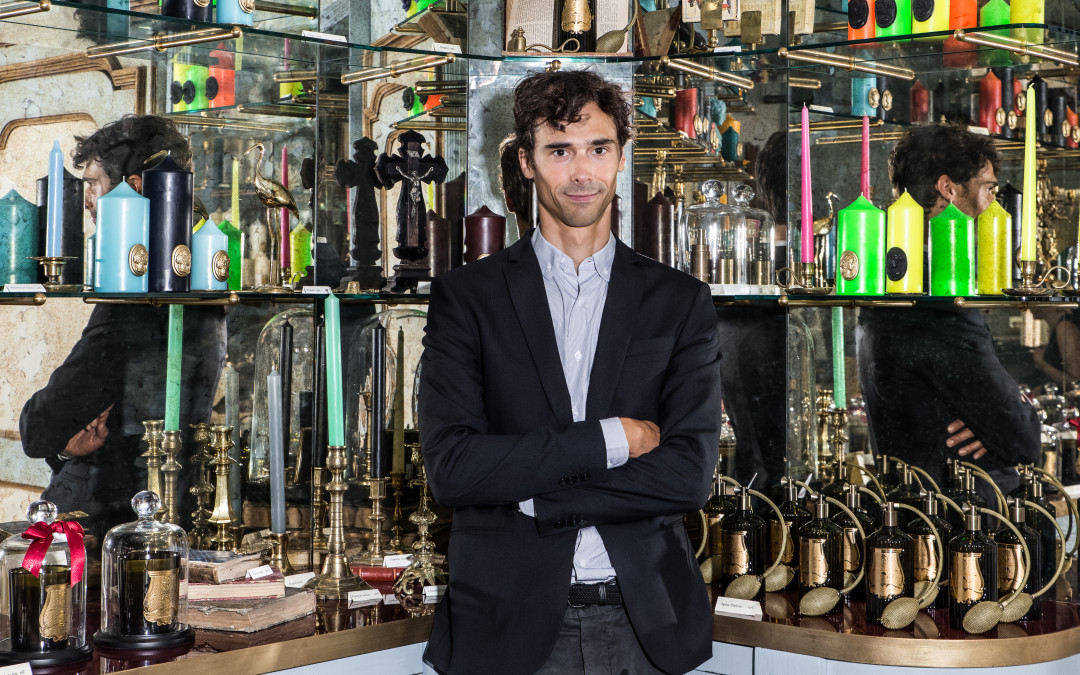
by Rebecca Taras | Feb 28, 2019 | Candles, History, Home, Paris
If you’ve ever visited the Palace of Versailles, then you’re well aware of its magnitude in both size and stature. Even if you haven’t, the numbers speak for themselves: Imagine 700 rooms, more than 2,000 windows, 1,250 chimneys, 67 staircases, and a capacity for 20,000 people. As long as we’re talking stats, equally astonishing is the 3,000-plus candles that illuminated the palace—out of necessity, not a craving for ambiance.
But indispensability is what ultimately laid the groundwork for the Trudon family legacy. In 1643, Claude Trudon opened a boutique on rue Saint-Honoré that specialized in candles, among other provisions. It wasn’t long before the court of Louis XV and the kingdom’s most commanding parishes were demanding the pristine white beeswax candles. In 1737, Claude Trudon’s descendant, Jérôme Trudon, purchased the Manufacture Royale des Cires (a.k.a. Royal Wax Manufacturer) in Antony, France from Péan Seigneur Saint-Gilles, expanding the firm’s capabilities.
To learn more about the rich history of this fascinating luxury candle company, I strolled over to the Cire Trudon offices at Place des Victoires to meet with Julien Pruvost, executive director for the brand. Among other things, we discussed how the Trudon family formula wound up in the French encyclopedia (encyclopédie, ou dictionnaire raisonné des sciences, des arts et des métiers), his favorite Trudon company legend and how the brand survived into the modern-day world.
With a view of the Basilica of Notre-Dame des Victoires from the office window and the intoxicating aroma of Trudon candles in the air, it wasn’t hard to imagine a time when all the world was bathed in the incandescent glow of candle light.
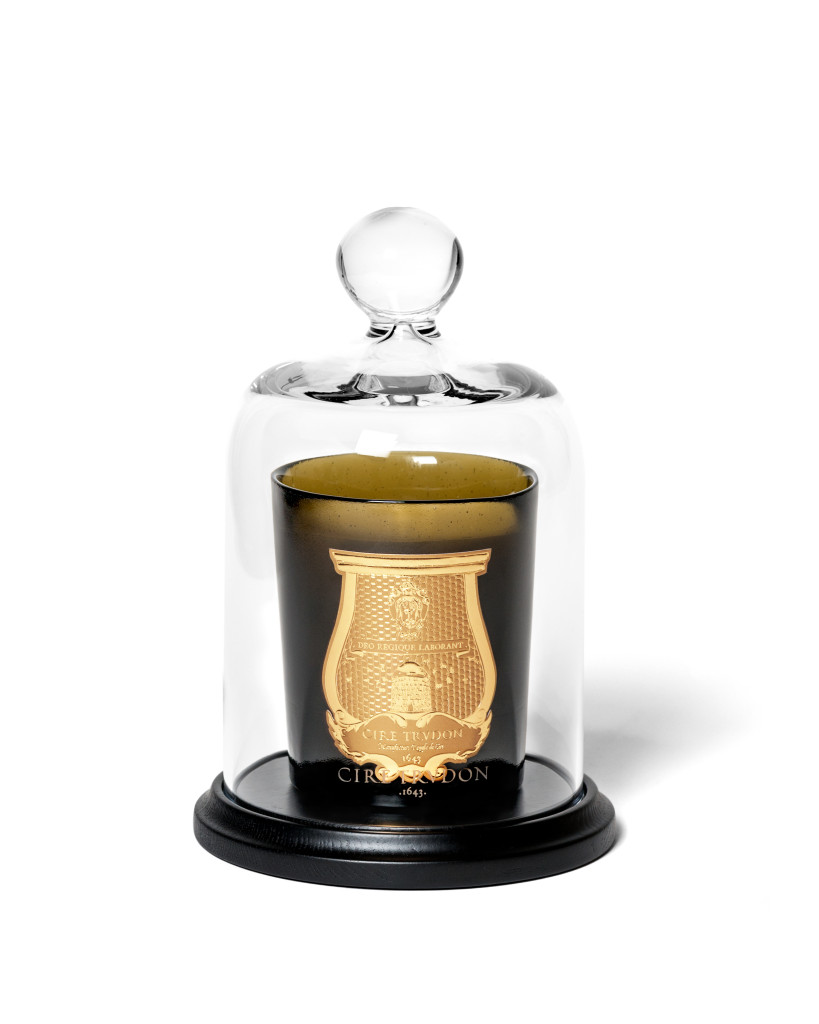
Photo courtesy of Cire Trudon.
In your own words, describe the history of Cire Trudon. “The history of Cire Trudon is short. The brand [as you know it now] was born in 2005. We cannot speak of a notion of brand survival, nor of survival here. The point is about transmitting, protecting and developing know-how. Cire Trudon condenses all of this into one entity. Cire Trudon tells the true story of over 350 years of candle and wax knowledge. Through its art, Cire Trudon tells the story of a people, a country, while speaking to the modern world.”
“I think that the main focal point is that we’re speaking to the former Royal Wax Manufacturer. When the Trudon family purchased the company from the former manufacturer, it had only recently become a thriving business that catered to the royals. They also improved the quality of the product to the point that a whole section of the French encyclopedia on arts, sciences and crafts is based on Trudon know-how. The engineer who was in charge of that section went to the Royal Wax Manufacturer and wrote down everything you would ever need to know about candle manufacturing—you could literally relaunch a candle produced in the way that it was done in the 18th century.”
What has enabled the brand to survive—and thrive—for so many years? “We don’t really consider ourselves ‘survivors;’ rather, we consider ourselves carriers of the heritage. We were able to reinvent ourselves. In a way, the Trudon family reinvented themselves when they improved the manufacturing from the previous [Royal Wax Manufacturer] owner. They were able to adapt the business to a time when gas and electricity were making their appearance. As for today, we’re not here to light a home—but we are in the decorative realm still producing candles, so that’s the important point.”
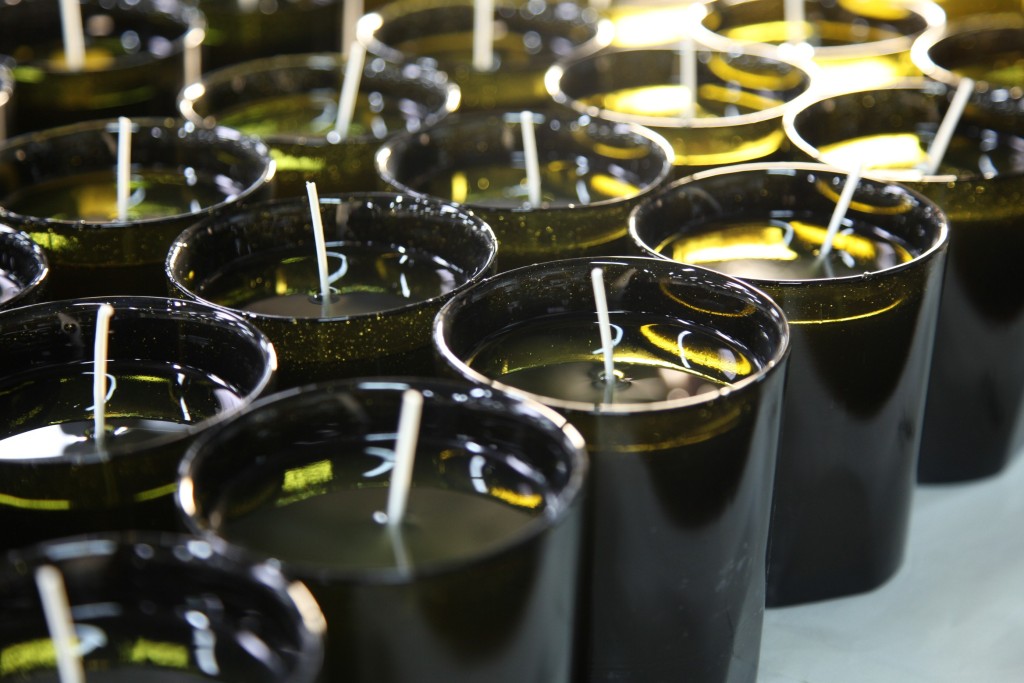
Photo courtesy of Cire Trudon.
Since the candles were originally a home necessity versus a decorative item, when was the fragrance introduced? “I found a late record of a lavender and citronella candle produced by the Trudon company—but later, in the early 19th century. We know for a fact that Paris was not the cleanest place on earth back then, and malaria was around, so you needed all sorts of propellants. Citronella candles—which we still use today—were used to keep the inside air purified. The homes were not that clean, so we assume that lavender candles were mainly around to purify—not scent—the room. It was a modern invention.”
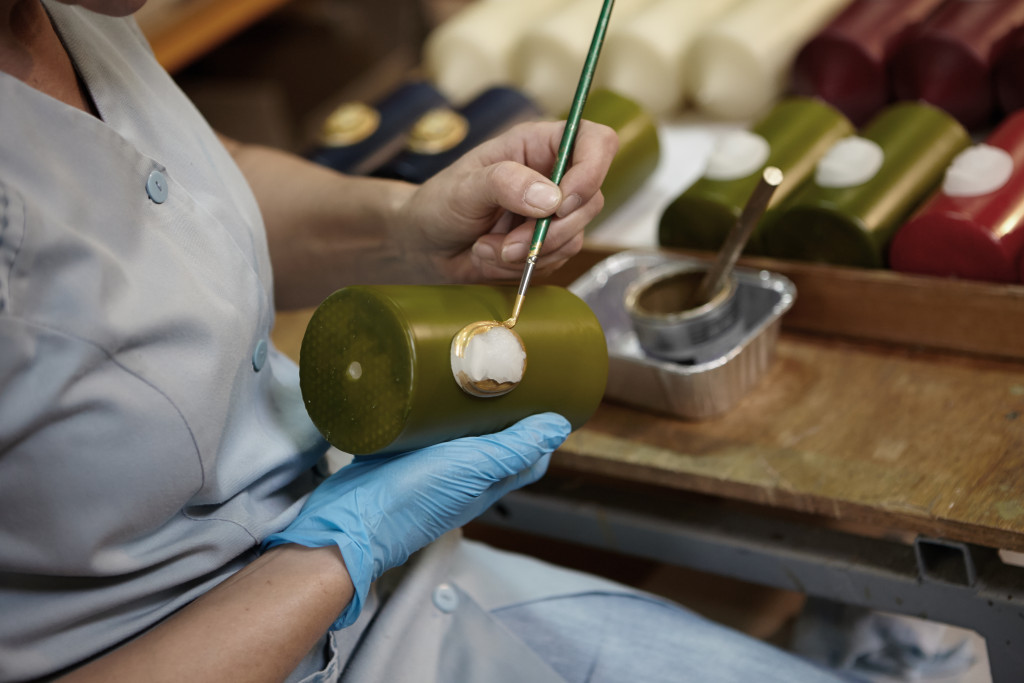
Photo courtesy of Cire Trudon.
When a company has been around for so long, there are generally a few great stories from its past—what is one of your favorite Cire Trudon legends? “My favorite legend is about the tunnel that might have existed between the Louvre and the Trudon store that used to be right behind the Louvre castle on Rue de l’Arbre Sec. Since Paris had an amazing tunnel grid beneath its surface that was exploited all through the Second World War, essentially for commercial purposes, it was very plausible that a tunnel existed between the Louvre and the Trudon store. The tunnel grid goes back to the Roman period when rocks were carved out of the Paris rock-bed. The grid served many purposes over the centuries, from simple rock source to catacombs to bomb shelters, etc. So legend has it that there was a horse carriage that brought the goods back and forth.”
What makes a Cire Trudon candle so special? “A candle is meant to melt. If the surface of your candle isn’t completely molten, then the scent won’t be released. It’s also important for the candle to overburn. You need to adapt the wick to the the fragrance. Some will encourage the burn, while others with larger fragrance molecules inhibit it. Each of our 100% cotton wicks is specifically calibrated for each scent. Other features include: Non-drip, don’t omit smoke, complex and highly sophisticated fragrance compositions, and unique natural beeswax formula.”
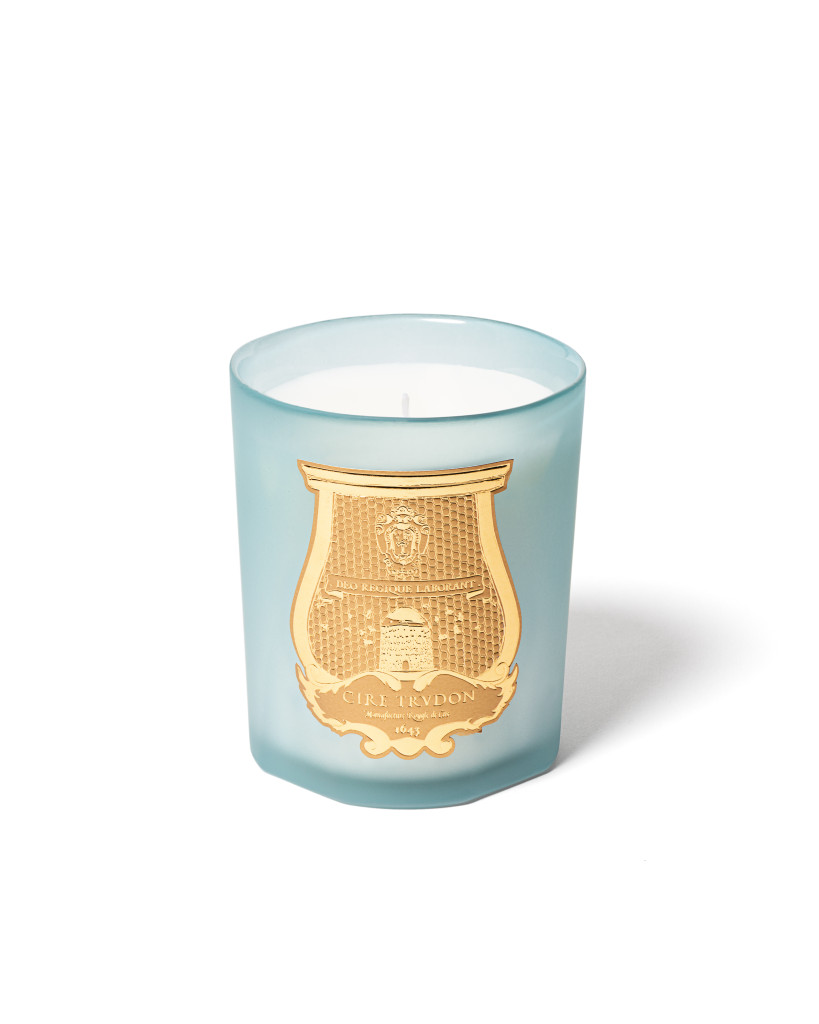
Photo courtesy of Cire Trudon.
How do you go about creating the scents? “We have an in-house team that comes up with the types of notes we would like to associate with each theme. For example, from a historical theme like Josephine. We looked at a certain part of her life when she lived in the Château de Malmaison after divorcing Napoleon. She loved tending to her rose garden and was fascinated by birds and plants, so it was very easy to work with that in terms of developing notes. Next, we bring the idea/concept to one of our perfumers.”
How long does it take to develop a scent? “We were never able to develop anything in under six months. However, when a scent comes out of the lab, it will not smell the same weeks down the line. The more you let it settle, the closer it will be to what the end result is. You cannot rush this process. It needs to mature because we try to work with the maximum amount of natural ingredients. They’re rounder, deeper and more interesting—these types of raw materials need to mature.”
What are the essential oils/fragrances you use? “They come from around the world, including France, and are transformed in Grasse, France.”
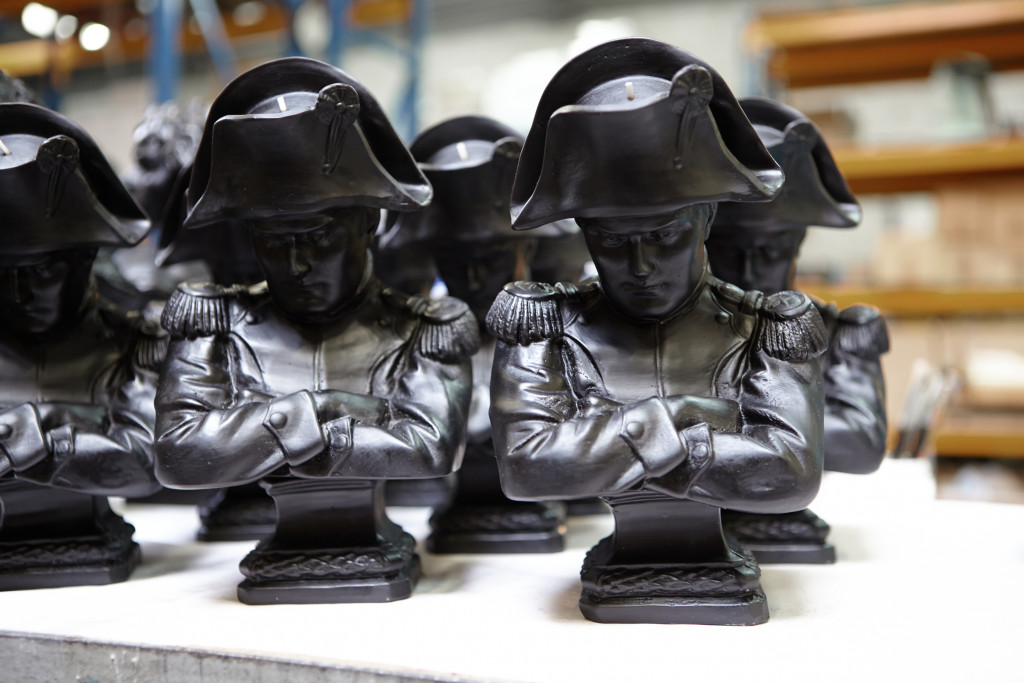
Photo courtesy of Cire Trudon.
Tell me about a few of your favorite offerings, past and present. “I personally use these days Bartolomé, Madeleine and Positano. I also use a lot the Cire Trudon travel room sprays—especially in my car or when I am travelling extensively. Watching our wax busts being made is also fascinating. We have a partnership with the French National Museum Council to have the exclusive rights to reproduce in wax certain references in their catalogue.”
How did you get involved in this business and what do you love about it? “I joined the company as head of private label in 2009. I slowly got involved in the manufacturing part of the business, and that’s when I really fell in love with the company. For me, it’s very grounding to know that there’s a place where I can go and see the products that we’re offering while working on ways to constantly improve them. I also love the fact that we are selling an ancient product into our modern, high-speed world.”
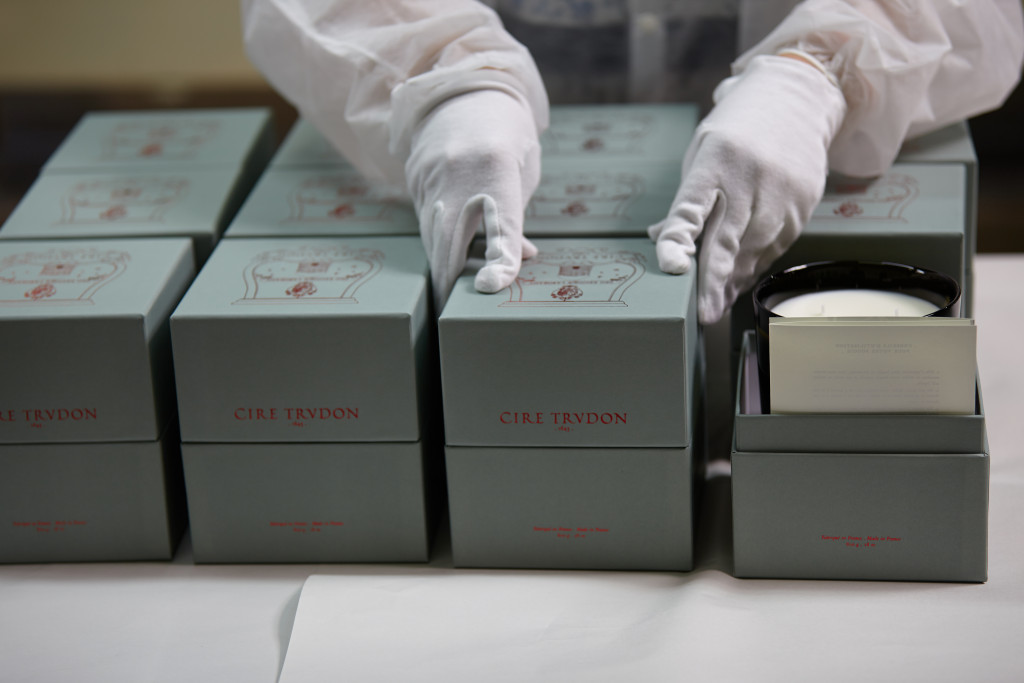
Photo courtesy of Cire Trudon.
Why do you think France has had so much success in creating luxury products over the years? “During the mid-17th century under Louis XIV, France made the market luxurious. Everything came from France and everyone wanted things from France, whether it was perfume, furniture, clothing—even architects, gardeners and scientists. Everything had been promoted so intensively under Louis XIV that there were thriving companies in France making all sorts of things. In a way, France is still living up to that, though it obviously had to adapt.”
WTB Signature Questions:
What do you always have in your carry-on bag? “For the last year and a half I have been carrying around fragrance samples with me. I try to smell a single fragrance in a variety of environments and situations. The home and/or the office are not always the best places to evaluate a fragrance because you’re used to their scent/environment.”
What is one of your favorite travel destinations and what is a destination on your bucket list?
Favorite destination: Lanzarote Island “It’s part of the Canary Islands. One, there is fantastic surfing over there and two, it’s a very wild and untapped place. Even so, the mayor of the main town is a man called César Manrique; he is also an artist, so he built a variety of structures on the island that are simply amazing. They’re built in lava tunnels or fields, so there’s a combination of this really rough landscape and modernist architecture. It’s like nothing that I’ve seen elsewhere.”
Bucket list destination: The Roden Crater (Arizona) by James Turrell “James Turrell is an American land artist who bought a crater in Arizona and turned it into an experimental art piece that you can actually penetrate and walk around. It relates to the sky and the stars, and it’s a real experience, from what I heard.”
